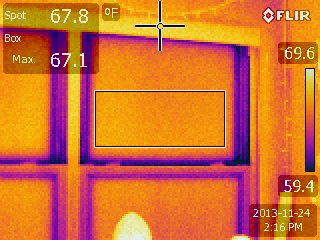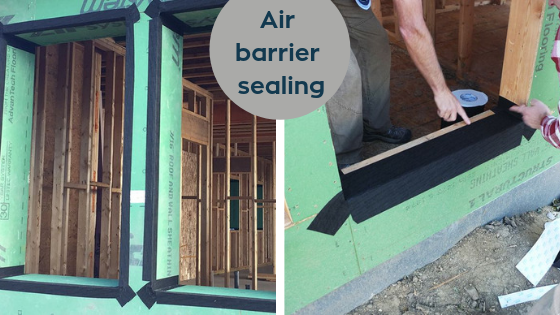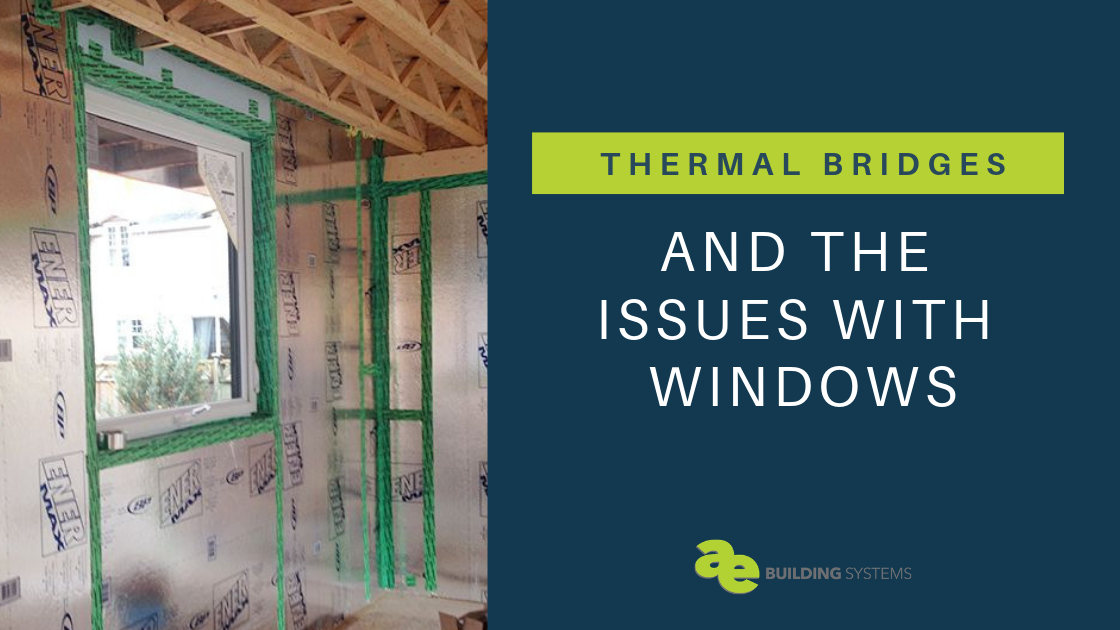As a homeowner, heat loss is or should be a big concern. Energy escaping through the building envelope (walls, roof, floor) means more energy is required to maintain a consistent temperature or better said – comfort -within your home. It also means higher utility bills whether you’re building a new home or looking to refurbish an existing home. One of the most significant considerations should be how to make your home more comfortable but also more energy-efficient – less costly to operate. Which leads us to the topic of Thermal Bridging!
What is thermal bridging?
In a heating climate and similar to air infiltration, thermal bridging results in heat loss and occurs when heat escapes from the inside of the building to the outside, via conduction and through the building envelope. If you’ve ever been in a house that has a “drafty” spot or just constantly feels cold, that’s likely the result of thermal bridging as much as or even more than air infiltration. Even airtight homes can have a heat-losses of 20 to 50 percent due to thermal bridges.
Types of Thermal Bridges
There are several types of thermal bridges that designers, builders, and homeowners should be aware of and the following are three common types:
- Repeating or Systematic thermal bridges: A common cause of heat loss are repeating thermal bridges which are predictably found inconsistent breaks in the thermal envelope allowing heat to pass through easily. It’s important to keep these in mind during a building’s design. Common Examples include wood and steel studs, steel wall ties, ceiling joists, and insulated suspended floor joists.
- Non-repeating thermal bridges: This method of heat loss doesn’t follow a pattern in the way that repeating thermal bridges do. A non-repeating thermal bridge tends to pop up in specific areas impacted by an interruption or break in the construction. Common culprits include things that penetrate the thermal envelope to include windows and doors, structural beams, pipes and cables, and cantilevers.
- Geometrical Thermal bridges: Generally found where the building envelope changes directions and where the materials meet, Geometric thermal bridge examples include wall corners, wall to roof and floor junctions. The more complex a building design is, the more geometric thermal bridging will be prevalent.
Regardless of the source, avoiding thermal bridges wherever possible is essential – and knowing where your home is losing heat can help you take the proper measures needed to reduce the problem.
Thermal Bridging and Windows
Often, it is windows that are a major culprit when it comes to heat loss and thermal bridging in the home. Standard or code minimum windows often represent a compromise. “We” accept their lower thermal performance because we enjoy the view, natural light, and ventilation they provide. However, when adding high-performance windows with higher R-values (lower U-values), windows become less of a concern for thermal bridging, especially when properly installed.
In an existing home, an expert can determine the state of a home’s windows by doing an inspection. They know what to look for in terms of damage, deterioration, and condition. Knowing a window’s age is a big help as well. Most older windows did not have high-performance glazing nor did manufacturers generally consider thermal bridging in the frames and spacers.
With new construction or existing homes, to reach your energy and comfort goals, it is important to consider high-performance windows. The thermal image below shows the thermal bridging – shown in blue/purple. This is likely why you have seen condensation on windows.

Note also high-performance windows help with other variables to include sound attenuation. They reduce the sound coming from the busy street in front of your house for example.
Thermal Bridging Results in Condensation – and Mold
Four variables come into play with condensation: outdoor temperature, indoor temperature, your home’s humidity level, and the indoor surface temperature of an exterior building envelope component. Since outdoor temperatures are not something we have control over, we focus on what is in our control. Windows that have well-insulated frames, multi-panes of gas-filled glass and have higher performance spacers will help increase the interior surface temperature of the windows. Higher interior surface temperatures help to effectively prevent the condensation of moisture on your windows preventing mold from growing. This subsequently improves your air quality. We would be remiss if we didn’t also mention the importance of ventilation systems which improves indoor air quality.

How To Prevent Window Thermal Bridging
- Glass: Pursue options that included triple or even quad glazing.
- Gas: Gas filled glazing is no joke. Argon gas is cost effective and provides a good boost in performance over air-filled units. Krypton gas, while more costly, provides an excellent increase to performance.
- Frames: Select frames made of low conductive materials. Aluminum frames without thermal breaks are a complete no-no for energy efficiency and comfort. Aluminum is a tremendous conductor of heat. Better options are wood, fiberglass, and PVC with insulating air chambers. These frames are even better if they are insulated. Note, thermally broken aluminum is a good option depending on how good the thermal break is.
- Spacers: Selecting windows with better spacers can help prevent thermal bridging in the windows as well. These spacers separate the panes of glass and appear where there are divided lights. Avoiding spacers made of aluminum and steel, and selecting stainless steel and various composite materials are much better options. Warm Edge, Super Spacer, and Swiss Spacer are some of the composite spacers that are available.
- Installation: Proper window installation including air sealing and insulation around the windows will significantly reduce the amount of energy loss. To reduce thermal bridging around windows, Thermal Buck is a great product for the installation.
Final Thoughts
Bringing awareness of thermal bridging to all of your construction partners will aid in your goal. An architect can design to minimize thermal bridges. By not paying attention to the details on the construction site or if there is a lack of training, reaching your goals will be difficult.
If you’re looking for ways to minimize thermal bridges and select high-performance windows for your project, contact us today.


